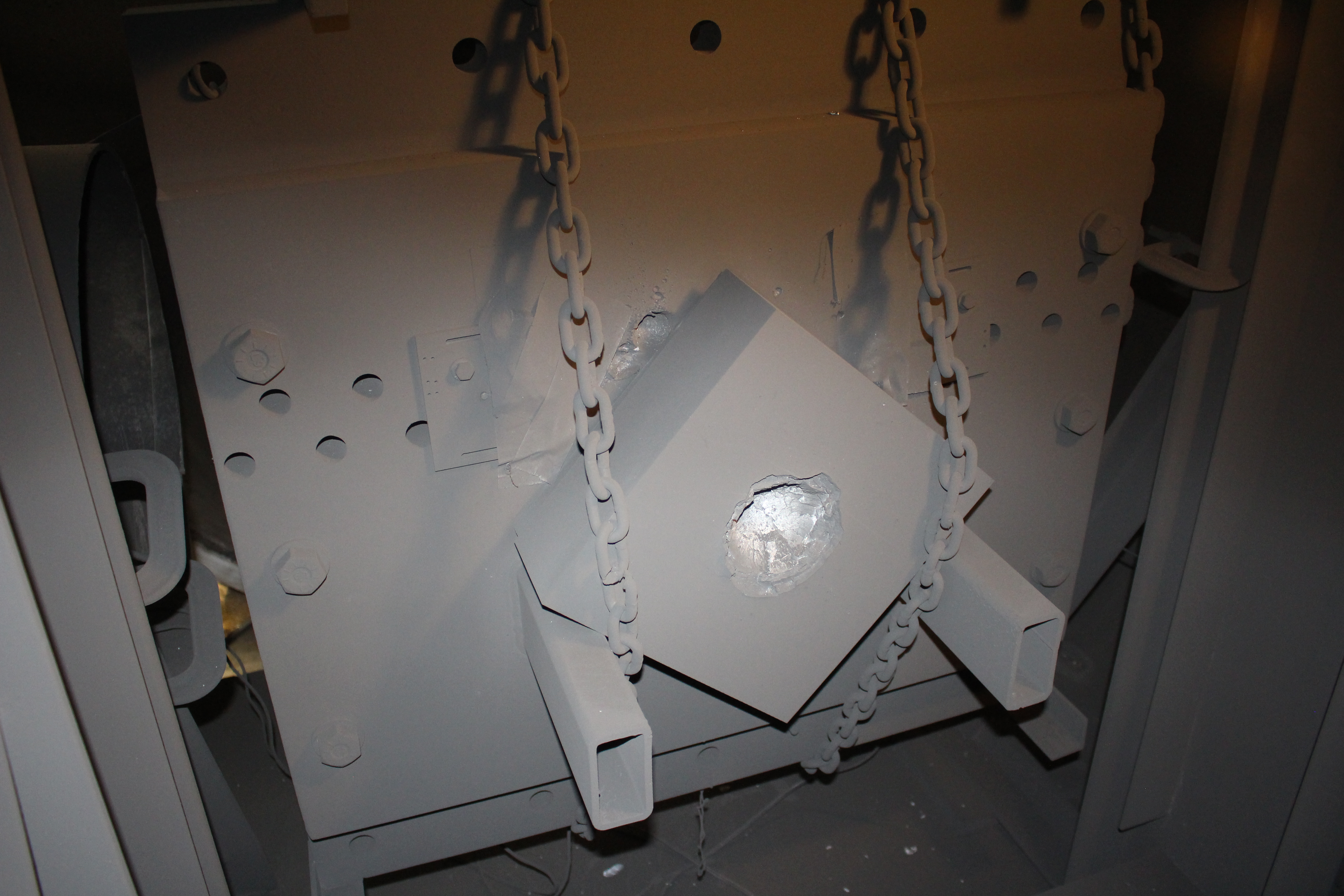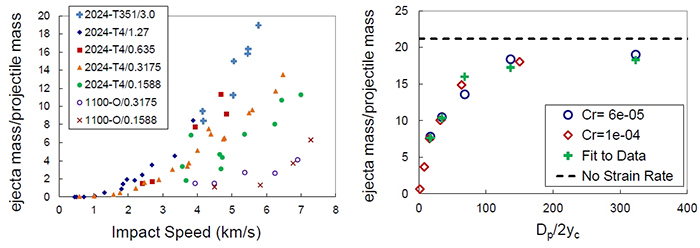Background
Historically it has been observed that impact events do not undergo linear geometric size scaling, i.e., if you double the size of the projectile, you don’t exactly double the crater size. The crater turns out to be a little larger than double the size. There are other aspects to size scaling that are even more dramatic. Involved in this work is the exploration of the size scaling of momentum enhancement and the role of damage evolution in size scaling.
Approach
Impacts were performed from 3 to 5.77 km/s for various impactors using SwRI’s large two-stage light gas gun facility. One set of experiments was with 3.0-cm-diameter spheres of aluminum impacted into aluminum targets.

Figure 1. Aluminum target attached to the pendulum in the two-stage light gas gun facility, post-test showing the crater.
Accomplishments
Within a large evacuated chamber along the flight line, we installed a large pendulum. Upon impact, the pendulum swing was recorded to determine the momentum transferred to the pendulum by the impact. After the test, the target was weighed to determine the mass liberated from the target through crater ejecta. Compared with previous data for a similar aluminum alloy, we showed there is a transition region in crater ejecta mass that depends on the size of the impactor. We also showed that nonlinear size scaling of the momentum enhancement continues beyond the size-effect saturation size for the crater ejecta mass.

Figure 2: Sequence of frames showing impact flash followed by debris thrown by the impact for a 3.0-cm-diameter aluminum sphere striking an aluminum target at 5.77 km/s.
As part of the project we developed a new material model for Al 2024-T351 and -T4 that includes shear-band slipping and material failure (separation) after a certain distance of slip. This new material model was placed in the computational mechanics code CTH and reproduced the observed nonlinear scaling in the crater ejecta mass when large-scale numerical simulations were performed. Specifically, the model says the nonlinear size-scaling behavior is due to inertial effects in the slip process. As for smaller scales for some of the material near the crater, there is not sufficient time for the shear band to slip far enough for material separation to occur before the impulsive loads due to impact dissipation. This work clearly shows that the size of impactors matter, since the effects of the impact increase at a greater rate than linear scaling based upon size predictions. This result is directly relevant to applications under discussion, such as deflecting asteroids, where large size impactors are being considered and where it is not possible to perform experiments using traditional gun launch techniques.

Figure 3 (Left): Plot showing the nonlinear behavior of the crater ejecta mass showing the ratio of crater ejecta mass to projectile mass as a function of impact velocity different-sized impactors (our data is the largest scale, with the blue cross).
Figure 4 (Right): Comparison of the data at 5.77 km/s with results of the new numerical model where the diameter of the impactor is normalized by the shear band slip distance to failure (2yc), showing good agreement of the model with the experimental data.
